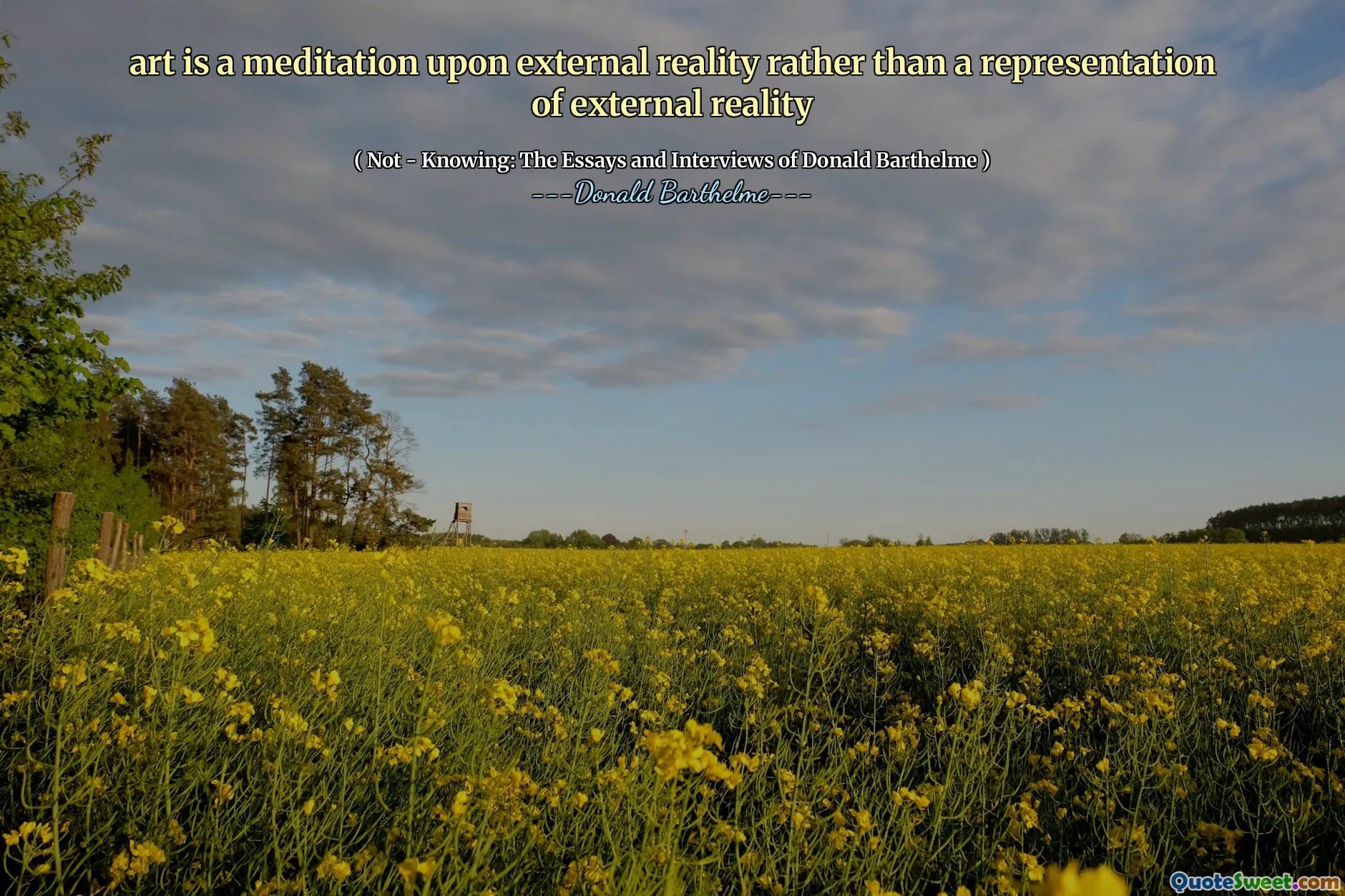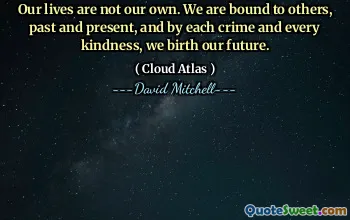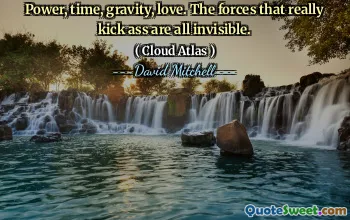
art is a meditation upon external reality rather than a representation of external reality
This quote offers a profound perspective on the nature of art, emphasizing its role as a contemplative process rather than merely a mirror of the external world. When we think of art traditionally, we might consider it as a means of reproducing or reflecting reality—photographs capturing a moment, realistic paintings depicting nature, or sculptures mimicking human forms. However, viewing art as a "meditation" shifts this focus inward, framing it as a practitioner's personal exploration and engagement with external realities. It suggests that artists use their craft not just to replicate what they see, but to interpret, question, and internalize the world around them.
This meditation is a process of understanding and making sense of external experiences, emotions, and truths, often transformed through the artist's unique lens, background, and subconscious influences. It allows each work of art to be a dialogue between the external environment and internal perception, fostering a deeper connection with reality as experienced and processed by the creator. Such a perspective elevates art from mere imitation to a meditative act—an intentional pause, reflection, and exploration.
By viewing art in this light, we encourage a more meaningful engagement with artworks ourselves. Instead of wanting art to exactly depict reality, we can seek the feelings, questions, and insights that come from engaging in this meditative process. Ultimately, this approach to art inspires both creators and viewers to consider reality as a complex, layered experience—one that invites continuous meditation rather than simple reproduction.






